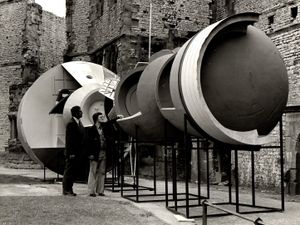An oasis of wildlife created at Ashwood Nurseries in Kingswinford
It’s an oasis of calm where all you can hear is the fluttering of butterflies, the chirping of crickets and the buzzing of bees.

As you stroll along the paths a sea of wildflowers sways gently in the breeze as dragonflies zoom past and grasshoppers jump from leaf to leaf.
This haven for nature is a canal-side wildlife meadow that has been created at Ashwood Nurseries in Kingswinford. The two-and-a-half acre site – next to owner John Massey’s famous garden – is being developed and maintained using the same ecological principles used to manage nature reserves across the country.
Conservation ecologist Tom Woodhall has been nurturing the meadow for the past five years to provide a variety of habitats in the hope of attracting a range of species.
“It’s a bit of a secret garden. It was originally an overgrown field John had as part of his garden and we’ve let nature take over.
“It’s predominantly grassland which is a scarce resource. We wanted to use that as the main habitat and plant native wildflowers because 97 per cent of British wildflower meadows have been lost since the 1930s.
“It’s become a nice little oasis of wildflowers for wildlife,” he tells Weekend
The first step towards creating the wildlife meadow was to cut back some of the grass to provide space for the wildflowers to flourish.
Yellow rattle, an annual with yellow flowers, loved by bees, was collected from where it was growing and distributed throughout the site to prevent the grasses from becoming too dominant.
Native flowers knapweed and scabious which attract butterflies to their nectar have also been planted along with bird’s-foot trefoil – the main plant food of the common blue butterfly.
“At this time of year the meadow really comes alive and you can see all of the butterflies and hear the buzzing of the crickets and grasshoppers,” says Tom, aged 40.
Twenty-three species of butterfly have been spotted on the site so far including ringlet, gatekeeper and green hairstreak.
“The UK only has 59 species of butterflies so to see 23 of the 59 here is great and shows we are providing what they need,” says Tom.
More than 400 species of moth have also been recorded with the help of light traps. Among those found are common emerald, black arches, elephant hawk-moth and buff-tip.
“There are more than 2,500 species of moth in the UK and people are often surprised how colourful they are, some are more colourful than butterflies.
“We work with Butterfly Conservation West Midlands to hold moth mornings where people can come and look at the moths we have caught in the meadow.
“It’s great for kids because they get to hold a moth on their finger and it’s a great way to encourage an interest in nature,” says Tom.
The canal-side setting also brings aquatic creatures such as dragonflies and damselflies. During the winter of 2017/18, a pond was dug out and this year it has seen the arrival of smooth newts, frogs and toads.
A large insect hotel with different sized compartments also provides homes for a variety of wildlife from insects such as ladybirds and lacewings to hedgehogs.
Dotted around the meadow are a number of refugia made from old pallets and pond lining which act as shelters for reptiles and insects.
They absorb and trap heat offering creatures such as grass snakes a means to gain warmth, while also providing protection from predation and disturbance.
Among the different habitats that have been developed around the site are mature native trees such as oak, birch, alder and wild cherry that provide for visiting woodland creatures. Hedgerows of hawthorn and blackthorn also ensure birds and insects have a plentiful supply of flowers and berries.
There is also an area of coppiced hazel which has been used to create nature fences and screens around the meadow.
“Hazel was growing here already and every few years we can cut it back and use it. Then it grows back and it’s ready to use again,” explains Tom, who works in the meadow three days a week.
A popular feature in the meadow is the bird hide for viewing the bird feeding area where woodpeckers, bullfinch and nuthatch are regularly seen as well as seasonal migrants such as siskin, swifts and swallows.
Tom has also seen kingfishers fishing from a perch that he installed near the canal bank. The meadow hosts bird ringing demonstrations with the help of Belvide Ringers to give visitors a chance to get up close to familiar garden birds. At the moment the meadow is only open to the public on John’s Garden Open Days but in the future Tom hopes to create a new entrance so it can be enjoyed by more visitors.
He also plans to hold more events and work with schools to use the meadow as an outdoor classroom.
“Being next to the canal makes the meadow a good corridor for wildlife. If you create the right habitat for the wildlife you want to attract, they will come.This is on a big scale but you can do the same thing in your own garden. If you leave a bit of grass growing, you will soon get communities of butterflies and insects foraging in the grass,” he says.
A moth morning will take place as part of the nursery’s summer Go Wild in the Garden programme from 9am until 12pm on the lawn outside the tea room on August 11. The wildlife meadow will next be open to visitors during an open day at John’s Garden from 10am until 4pm on August 17. For more information see www.ashwoodnurseries.com





